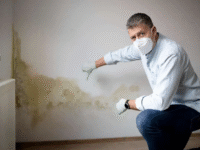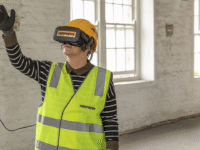How Indoor Air Quality Changes After a Mold Remediation Job

Key Takeaways
- Professional mold remediation addresses existing infestations but must be paired with continual care for healthy air quality.
- Monitoring and preventive strategies are crucial post-remediation to prevent mold recurrence.
- Investing in air purification, regular inspections, and humidity control enhances long-term indoor air health.
Understanding the Impact of Mold on Indoor Air Quality
Mold growth indoors can have profound effects on the air you breathe. Mold spores become airborne, easily spreading and potentially triggering allergies, asthma, and other respiratory issues for building occupants. Even after treatments like mold remediation, some microscopic spores may remain in the atmosphere, making vigilant follow-up crucial.
The true threat of mold often lies not only in what you can visibly see but also in the microscopic particles that linger unseen. These spores may continue to affect the environment, underscoring the importance of comprehensive removal and ongoing attention. Proper remediation reduces indoor spore levels, but effective air quality improvement goes beyond cleaning surfaces.
Indoor air quality after mold remediation evolves based on the methods used, the thoroughness of the remediation, and whether underlying moisture issues are addressed. Factors such as home layout, airflow, and the extent of mold contamination can all impact how long it takes for the air to truly clear. Awareness and proactive steps are vital to sustaining results over time.
Another key aspect is understanding the relationship between indoor humidity and mold resurgence. When moisture issues persist, even the best remediation may only be temporary.
Immediate Effects Post-Remediation
Immediately following a professional mold remediation job, the primary objective is to eradicate visible mold colonies and significantly reduce the concentration of airborne spores. The initial improvement in air quality can be substantial, especially when a severe infestation is removed. However, how effectively the air improves depends on several contributing factors:
- Extent of Infestation: Larger or deeply entrenched infestations tend to release more spores, requiring deeper and more prolonged remediation efforts to restore safe air conditions.
- Remediation Techniques: Techniques like HEPA vacuuming, negative air pressure containment, and wet cleaning significantly minimize post-job airborne spores.
- Post-Remediation Practices: Thorough cleaning, prompt removal of contaminated materials, and diligent ventilation management all help ensure that spore concentrations continue to decline after the job is complete.
Ensuring high air quality isn’t just about what happens during remediation but also about how well best practices are continued after the professionals leave.
Monitoring Air Quality After Remediation
Monitoring indoor air quality following remediation is critical to ensure the success of the process and ongoing safety. This includes:
- Air Quality Testing: Professional-grade testing identifies lingering spore presence or new contaminant sources, ensuring effective remediation and safe space for re-occupancy. The EPA provides further information on post-remediation air quality in its guide to mold cleanup and air quality.
- Visual Inspections: Routine examinations of problem spots (such as basements, kitchens, or bathrooms) for recurrent moisture or visible mold are essential. Even small leaks can restart the mold growth cycle, so periodic mold inspection by certified professionals is highly recommended to detect hidden colonies before they spread.
- Humidity Control: Maintaining ideal indoor humidity (generally recommended between 30% and 50%) with dehumidifiers or ventilation prevents moisture buildup—a leading cause of mold problems.
Early detection of recurring issues allows homeowners to address them before outbreaks become severe, thus protecting health and property.
Implementing Preventive Measures
True indoor air recovery goes beyond remediation. Implementing long-term preventive strategies reduces the risk of mold regrowth and supports clean air:
- Enhancing Ventilation: To promote air exchange, use exhaust fans in bathrooms and kitchens, open windows when possible, and ensure HVAC systems are free of blockages.
- Utilizing Dehumidifiers: Areas prone to moisture, like crawl spaces and basements, benefit greatly from consistent dehumidification.
- Regular Maintenance: Check plumbing, roofs, and windows for leaks, and repair promptly to eliminate moisture sources.
These measures protect your home from mold and improve general indoor air quality by reducing all forms of indoor pollution.
The Role of Air Purifiers
High-Efficiency Particulate Air (HEPA) purifiers provide an extra line of defense against remaining and newly introduced airborne particles, including mold spores. Choosing a purifier for your space’s size and following a regular filter replacement schedule helps keep the air pure, particularly in high-risk areas or where vulnerable individuals reside.
- Choose a purifier appropriate for the dimensions and use of each room.
- Replace the filters as per brand recommendations, especially after a remediation project.
- Position purifiers in rooms with previous mold issues for targeted protection.
When used properly, air purifiers greatly enhance ongoing efforts to maintain a healthy indoor environment.
Importance of Professional Clearance Testing
Clearance testing by a certified mold specialist verifies that your property is healthy to occupy. The process generally involves:
- Collecting samples from the air and surfaces in remediated areas
- Analyzing these samples to identify mold types and concentrations
- Comparing results with recognized safety benchmarks to verify a successful outcome
Passing clearance testing means that spore counts and indoor pollutant levels are appropriate for human health, delivering valuable peace of mind.
Long-Term Maintenance for Optimal Air Quality
Maintaining clean indoor air is an ongoing responsibility. Essential steps include:
- Regular dusting and vacuuming, with special attention to corners and behind appliances
- Inspecting HVAC systems every season and changing air filters as recommended
- Continuously monitoring humidity and swiftly fixing leaks, water intrusion, or signs of condensation
These habits, when made routine, help safeguard your family’s health and your property investment year-round.
Final Thoughts
Mold remediation is a major milestone in creating a healthier indoor environment. However, maintaining improved air quality requires a combination of regular inspections, early intervention when problems arise, and sustained preventive efforts. Through a layered approach of remediation, monitoring, and maintenance, you can enjoy peace of mind and fresh, clean air in your home for the long term.



